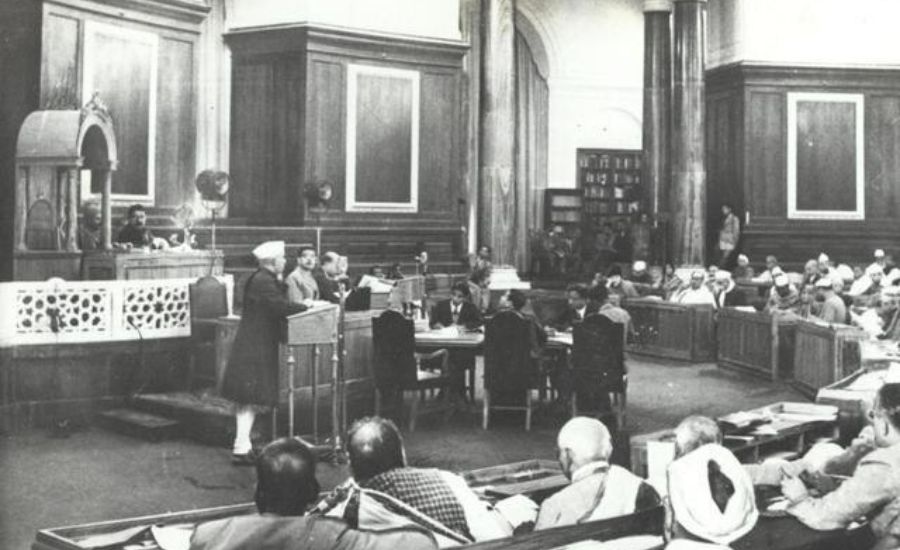
Jawaharlal Nehru introduced the Objectives Resolution in the Constituent Assembly on 13th December 1946. The Assembly extensively debated the Resolution between the 16th and 19th of December. On 21st December 1946, the Assembly decided to postpone discussions and took up the Resolution once again on 21st January 1947. During these deliberations, it discussed various aspects of the Objectives Resolution and the political context that surrounded it; these included: the absence of the Muslim League and princely states, federalism, minority rights, and socio-economic rights.
On 22nd January 1947, members of the Assembly wanted conversations around the Resolution to close. The President asked Nehru to respond to the debates and complete the discussion.
He began by taking the Assembly back to the moment when he introduced the Resolution (‘weight and solemnity of that occasion’), what it meant to the people and its relation to India’s past and future. He was glad that the Assembly, taking into account the concerns of some members, had postponed the consideration of the resolution to give the Muslim League and the Princely States the chance to join the deliberations; both groups, however, did not do so. He told the Assembly that the door to these groups would continue to be kept open.
Nehru responded to the criticisms from the rulers of princely states about the idea of the sovereignty of the people. He rejected the notion that some human beings had divine authority to rule over others; there was going to be no compromise on rejecting the idea of the divinity of kings.
He had to deal with a tricky situation: he had to send a message to the rulers of the princely states that India was going to be a republic – popular sovereignty of the people was supreme which implied the undermining of monarchical forms of government; at the same time, he had to be careful to not rub the rulers of the princely states in the wrong way – they could opt out of the constitution-making process and the union altogether. He argued that there would be no interference in the internal affairs of the princely states but in the same breath said –
“..we claim in this Resolution to frame a constitution for a Sovereign, Independent, Indian Republic–necessarily Republic. What else can we have in India? Whatever the States may have or may not have, it is impossible and inconceivable and undesirable to think in any other terms but in terms of the Republic of India…”
He then turned toward India’s disposition to the world at large. He argued that while Indians for a long time, since the Purna Swaraj Declaration 1930, had called for severing ties with the British, there was never an intention of isolating India from the rest of the world; India would aim for friendship with the British people and the Commonwealth. Nehru invoked the United Nations Organisation which was in its infancy: while the organization had defects, India would continue to cooperate with it. He further went on to articulate a foreign policy for India – what would later be referred to as ‘non-alignment’.
He went on to speak about the constitution itself. While he hoped the Constitution that the Assembly would frame would be a ‘good’ one, he argued:
‘…but does anyone in this House imagine that, when a free India emerges, it will be bound down by anything that even this House might lay down for it? A free India will see the bursting forth of the energy of a mighty nation. What it will do and what it will not, I do not know, that it will not consent to be bound down by anything…It may be that the Constitution, this House may frame, may not satisfy that free India. This House cannot bind down the next generation, or the people who will dully succeed us in this task…’
Nehru was clear: the Indian Constitution could not be static – it had to respond to the specific needs and aspirations of future generations. He then closed his speech:
‘…May this Resolution bear fruit and may the time come when in the words of this Resolution, this ancient land attains its rightful and honored place in the world and makes its full and willing contribution to the promotion of world peace and the welfare of mankind’
The President of the Assembly signaled to the members that the time had come to vote on the Resolution and hoped that members would vote in favour of it. He read out the Resolution, first in English, then in Hindi; Shri Mohanlal Saksena read out the Urdu translation.
Members of the Assembly then voted in favour of the Resolution and adopted it with all members standing.
